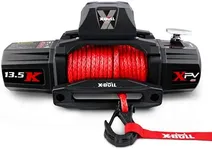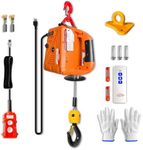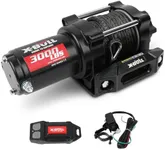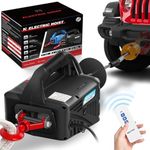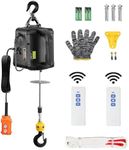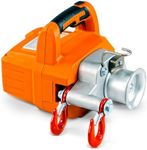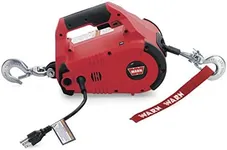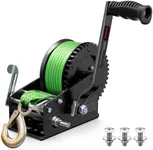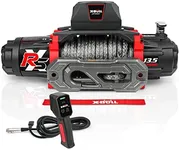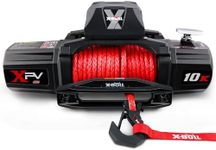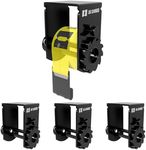Buying Guide for the Best Portable Electric Winches
When choosing a portable electric winch, it's important to consider your specific needs and the tasks you plan to accomplish with it. Portable electric winches are versatile tools used for pulling or lifting heavy loads, and selecting the right one can make your work easier and more efficient. Here are some key specifications to consider when making your decision.Load CapacityLoad capacity refers to the maximum weight the winch can safely pull or lift. This is crucial because using a winch with insufficient capacity can be dangerous and damage the equipment. Load capacities are typically measured in pounds or kilograms. For light-duty tasks, such as pulling small vehicles or equipment, a winch with a capacity of up to 2,000 pounds may suffice. For medium-duty tasks, like moving larger vehicles or heavy machinery, look for capacities between 2,000 and 5,000 pounds. For heavy-duty applications, such as industrial use or off-road recovery, you may need a winch with a capacity exceeding 5,000 pounds. Assess the heaviest load you expect to handle and choose a winch with a capacity that exceeds this weight to ensure safety and reliability.
Line SpeedLine speed indicates how quickly the winch can pull in the cable, usually measured in feet per minute. This is important because faster line speeds can save time and increase efficiency, especially in time-sensitive situations. Line speeds can vary widely; slower speeds (under 10 feet per minute) are suitable for precise, controlled movements, while faster speeds (over 20 feet per minute) are better for quick recoveries or tasks requiring speed. Consider the nature of your tasks: if you need to move loads quickly, opt for a winch with a higher line speed. For more controlled, delicate operations, a slower line speed may be preferable.
Cable Length and TypeThe cable length and type are important for reaching and securing loads. Cable lengths can range from 30 to 100 feet or more. Longer cables provide greater reach but can be more cumbersome to manage. Shorter cables are easier to handle but may limit your range. The type of cable, typically steel or synthetic, also matters. Steel cables are durable and resistant to abrasion, making them suitable for rugged environments. Synthetic cables are lighter, easier to handle, and safer if they break, but they may require more maintenance. Choose a cable length that suits the distances you need to cover and a type that matches your working conditions and safety preferences.
Power SourcePortable electric winches can be powered by different sources, such as a vehicle's battery, a standalone battery pack, or a standard electrical outlet. The power source affects the winch's portability and convenience. Vehicle-powered winches are great for on-the-go use, especially in remote locations, but they require a compatible vehicle. Battery-powered winches offer flexibility and can be used anywhere, but they need to be recharged regularly. Winches that plug into an electrical outlet are ideal for stationary use in workshops or garages. Consider where and how you will use the winch to determine the most suitable power source for your needs.
Control OptionsControl options for winches include wired and wireless remote controls. Wired controls are reliable and don't require batteries, but they limit your mobility. Wireless controls offer greater freedom of movement and can be more convenient, especially when working alone or at a distance from the winch. However, they rely on batteries and can be susceptible to interference. Think about your working environment and whether you need the flexibility of a wireless remote or the dependability of a wired one. Some winches offer both options, providing versatility for different situations.
Mounting OptionsMounting options determine how and where you can attach the winch. Some winches come with built-in mounting plates or brackets, while others require additional mounting hardware. Common mounting options include hitch mounts, bumper mounts, and portable mounts. Hitch mounts are versatile and can be easily attached to a vehicle's hitch receiver. Bumper mounts provide a more permanent solution for vehicles frequently using the winch. Portable mounts offer the greatest flexibility, allowing you to use the winch in various locations. Consider how you plan to use the winch and choose a mounting option that offers the right balance of convenience and stability.
